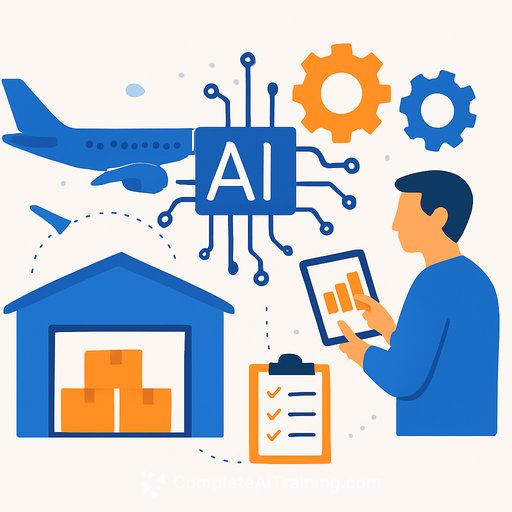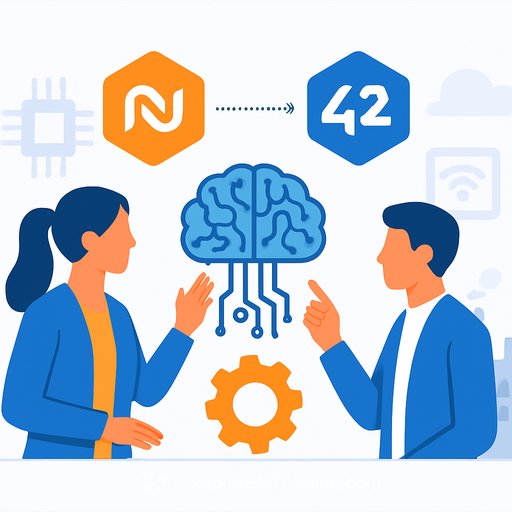How Investors May Respond To Lockheed Martin Integrating Google AI - What Ops and Product Teams Should Watch
In late October 2025, Lockheed Martin and Google Public Sector announced a plan to bring Google's generative AI, including Gemini models, into Lockheed Martin's secure AI Factory. The focus: accelerate multi-modal data analysis, compress R&D cycles, and tighten logistics across national security programs. For operations and product leaders, this isn't a headline to skim. It's a signal on how AI will be operationalized inside highly regulated, mission-critical environments.
What's changing inside the operation
- Data fusion gets practical: Text, imagery, telemetry, and maintenance data can be analyzed together to surface patterns and risks earlier.
- Faster engineering loops: Model-assisted design reviews, test analysis, and documentation reduce handoffs and rework.
- Supply chain and MRO gains: Predictive parts planning, triage of incident reports, and automated compliance checks lower delays.
- Standardized secure MLOps: A consistent path to build, vet, deploy, and monitor models across programs inside the AI Factory.
- Ecosystem alignment: The X-Bow Systems collaboration on the Astris AI Factory points to scaled use in missile and hypersonic production.
Investor takeaway (kept short)
The partnership strengthens Lockheed Martin's technology posture, but near-term performance still hinges on execution of existing programs. The biggest swing factor remains cost overruns and potential write-downs in legacy and classified work, not the press release.
If AI shortens cycle times and boosts quality, margins can improve over time. If integration adds complexity without measurable wins, the risk profile doesn't change.
Numbers that set expectations
- Management outlook targets $81.0B in revenue and $7.1B in earnings by 2028.
- That implies ~4.1% annual revenue growth and a $2.9B earnings increase from the current $4.2B.
What ops and product leaders should measure in the next 12-24 months
- Engineering lead time: Requirements to design freeze; change request turnaround.
- Model adoption: Number of programs using AI in production workflows (not pilots).
- Quality: Defect escape rate before/after AI-assisted reviews; non-conformance cycle time.
- Throughput: Test analysis backlog, proposal development time, and logistics dwell time.
- Cost: Compute and security spend per delivered model; ROI by use case.
- Compliance: Audit findings tied to model governance, data lineage, and access control.
Execution checklist you can borrow
- Start with high-friction workflows: Requirements traceability, test report synthesis, supplier risk triage.
- Go multi-modal early: Pair text, CAD, and sensor data for richer failure analysis and maintenance insights.
- Wrap with guardrails: Role-based access, prompt/content filters, and logging from day one.
- Define the runway from pilot to production: Clear acceptance criteria, red-team reviews, and rollback plans.
- Control costs: Reserved capacity, workload scheduling, and model selection by task complexity.
- Upskill the line: Train engineers and planners to co-work with model outputs, not fight them.
Risks and constraints to factor in
- Data classification limits can block training and context windows if not planned upfront.
- Model drift and hallucinations require continuous evals and human oversight.
- Vendor lock-in: Build portability into your stack (interfaces, export paths, fallback models).
- Integration debt with legacy PLM/ERP/MES slows rollouts if interfaces aren't productized.
- Supply chain data gaps cap AI impact; invest in data contracts and validation at source.
- Workforce adoption stalls without incentives and hands-on training tied to daily tasks.
Market sentiment snapshot
Community fair values for LMT cluster between US$389 and US$597 across 24 viewpoints. Demand for advanced platforms supports revenue, while contract challenges and cost pressure could influence returns. Expect sentiment to track proof of AI impact on delivery and margins rather than announcements.
Why this partnership matters beyond the headline
Defense programs run on documentation, verification, and logistics-exactly where generative and multi-modal AI can trim delays and errors. If Lockheed Martin proves repeatable wins inside a secure AI Factory, it sets a template others will copy: governed models, measurable throughput gains, and fewer surprises late in the lifecycle.
Further resources
Your membership also unlocks:










